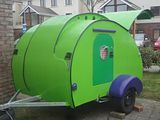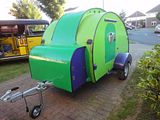16 foot single wheel unusual TD build
Re: 16 foot single wheel unusual TD build
No worries.
Just a couple more tips while i think of them. You need to heat a wider strip to make the plastic follow the curve of the pole, try zig zaging the gun up and down as you move side to side. the bend need to start at the the 12 o clock position on the pole you used and finish at the 9 o clock position to get the same radius. If you are building a former or jig to bend on remember to minus the thickness of your sheet to get the right size radius on any bends. I.E. a 10mm outer radius in a 3mm thick piece will need a 7mm radius in the former.
Just a couple more tips while i think of them. You need to heat a wider strip to make the plastic follow the curve of the pole, try zig zaging the gun up and down as you move side to side. the bend need to start at the the 12 o clock position on the pole you used and finish at the 9 o clock position to get the same radius. If you are building a former or jig to bend on remember to minus the thickness of your sheet to get the right size radius on any bends. I.E. a 10mm outer radius in a 3mm thick piece will need a 7mm radius in the former.
- 3nero
- Teardrop Master
- Posts: 129
- Joined: Mon May 13, 2013 3:40 pm
- Location: Co.Wicklow Ireland
Re: 16 foot single wheel unusual TD build
Zig zag, yes, great ideas here. Thx again.Andy
-

WeirdDogGuy - Teardrop Advisor
- Posts: 79
- Images: 13
- Joined: Tue Apr 15, 2014 5:21 pm


